Overclocking
The overclocking with air cooling is almost hopeless, because the card is already quite neatly overclocked from the factory and thus reaches its physical limits, especially in the closed housing. With a good water cooling, even 2076 MHz are in it, but our chip was already at this point already at the end despite chiller, power target increase and small voltage injection. GPU lottery.
Temperatures and clock rates
First, we compare the achieved start and end values for temperatures and GPU clock (boost) in tabular form:
| Initial |
Final value |
|
|---|---|---|
| Open Benchtable | ||
| GPU Temperatures Air Cooling |
40 °C | 76 °C |
| GPU Clock Open |
2012 MHz | 1924 MHz |
| Ambient temperature | 22 °C | 22 °C |
| Closed Case | ||
| GPU Temperatures Air Cooling |
42 °C | 78 °C |
| GPU Clock Closed Case |
2000 MHz | 1898 MHz |
| Air temperature in the housing | 25°C | 38°C |
| Water Cooling (Chiller) | ||
| GPU Temperatures @stock |
22 °C | 35 °C |
| GPU clock @stock |
2025 MHz | 2000 MHz |
| GPU temperatures @max. Oc |
22°C | 37°C |
| GPU clock @max. Oc |
2076 MHz | 2076 MHz |
| Water | 20 °C | 20 °C |
Overview Graphs: Temperatures vs. Clock
For better illustrations now again the respective courses considering our timeline of a total of 15 minutes each for the warm-up time.
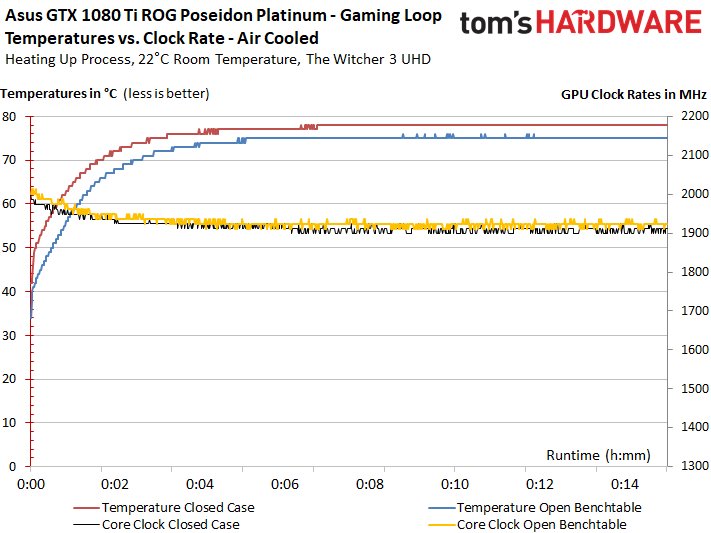
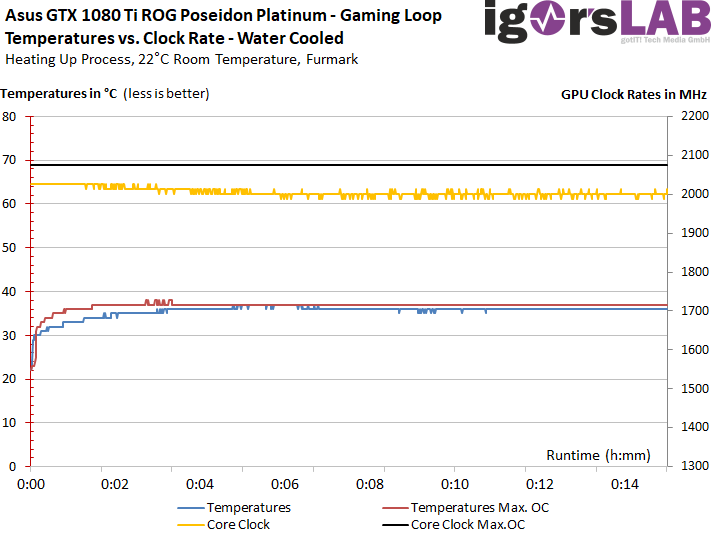
Thermal analysis of the back of the board
Finally, we look at the thermal analysis of the respective load characteristics. While the base temperatures and the GPU internal temperature are identical in air cooling due to the slower heat dissipation, the water cooling shows a small weakness of the cooling system used. While a normal fullcover water block allows no more than 5 Kelvin between water and GPU diode, the hybrid solution allows up to 17 Kelvin in the OC. In addition, the board temperature below the package is now also significantly higher than the GPU internal temperature.
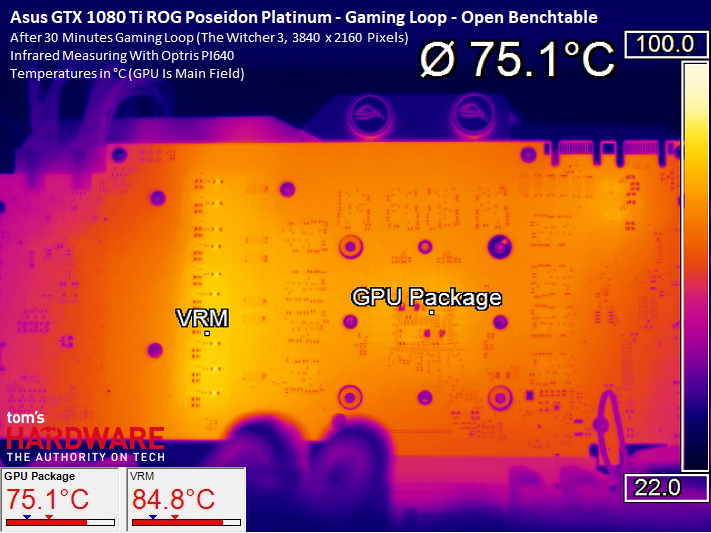
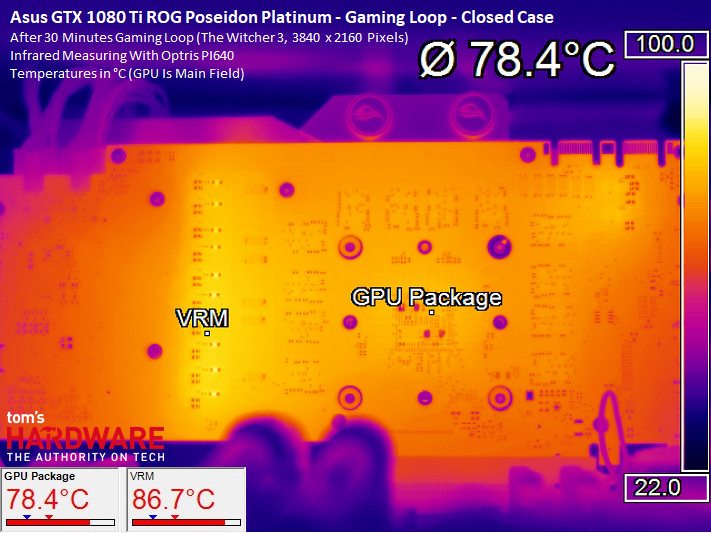
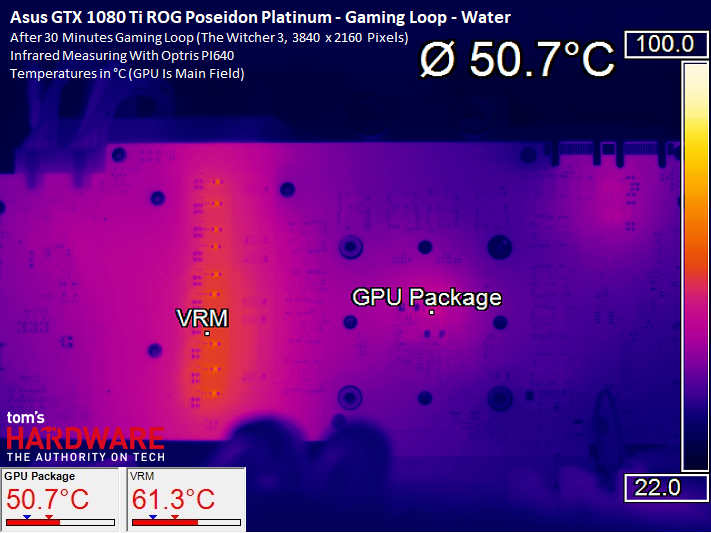
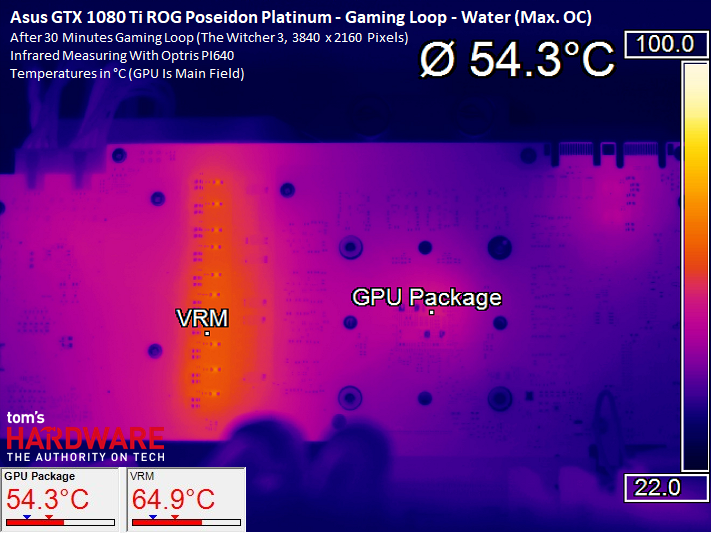
- 1 - Einführung und Übersicht
- 2 - Platine und Spannungsversorgung im Detail
- 3 - Gaming Performance: 2560 x 1440 Pixel (WQHD)
- 4 - Gaming-Performance: 3840 x 2160 Pixel (Ultra-HD)
- 5 - Leistungsaufnahme Im Detail
- 6 - Temperaturen, Taktraten, OC und Wärmebildanalyse
- 7 - Kühlerdetails und Geräuschentwicklung
- 8 - Zusammenfassung und Fazit

































Kommentieren